The Irascibles: The Birth of American Abstract Expressionism
This photograph of New York-based Abstract Expressionist painters was published in Life magazine in January of 1951. The photograph, dubbed “The...
Tom Anderson 13 February 2025
A master of the New York School who expatriated to France, Joan Mitchell tirelessly explored new ways of expression and reinvented the landscape in her dynamic, colorful paintings.
Joan Mitchell was born on February 12, 1925 in Chicago. The daughter of well-off and artistic parents, she grew up an energetic, creative child. She spent countless hours with her family in the 19th-century galleries of the Art Institute of Chicago, admiring the Post-Impressionist masters who would become her artistic models: Vincent van Gogh, Henri Matisse, Wassily Kandinsky, and Paul Cézanne.
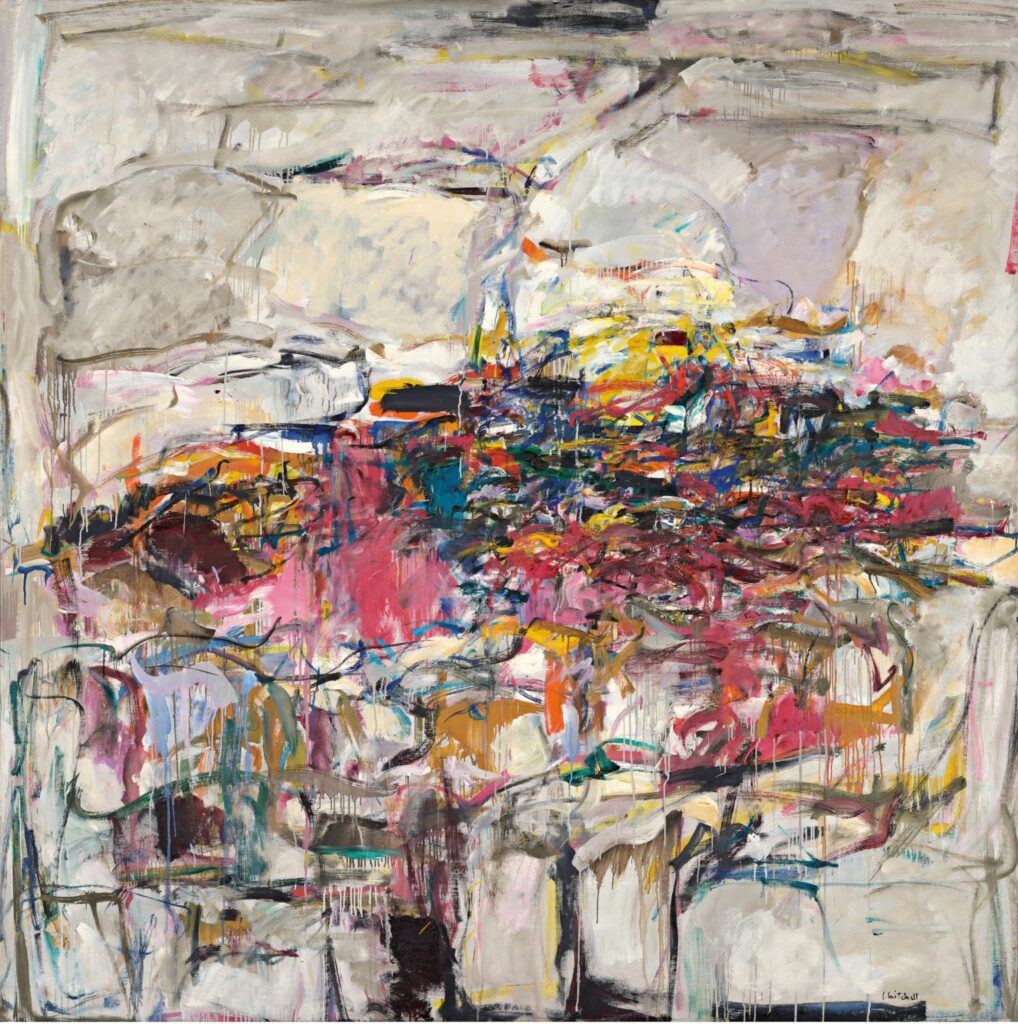
Joan Mitchell, City Landscape, 1955, Gift of Society for Contemporary American Art, Art Institute of Chicago, Chicago, IL, USA. © Estate of the artist.
Mitchell attended Smith College where she earned a BFA and an MFA before moving to New York to continue painting. She soon became a fixture of the New York School, a group of artists, writers, and intellectuals that included Willem and Elaine de Kooning, Franz Kline, Lee Krasner, Jackson Pollock, and Hans Hofmann. Though she was accepted by the New York art world, Mitchell struggled to find her place as one of few women in a movement famous for its macho personalities.
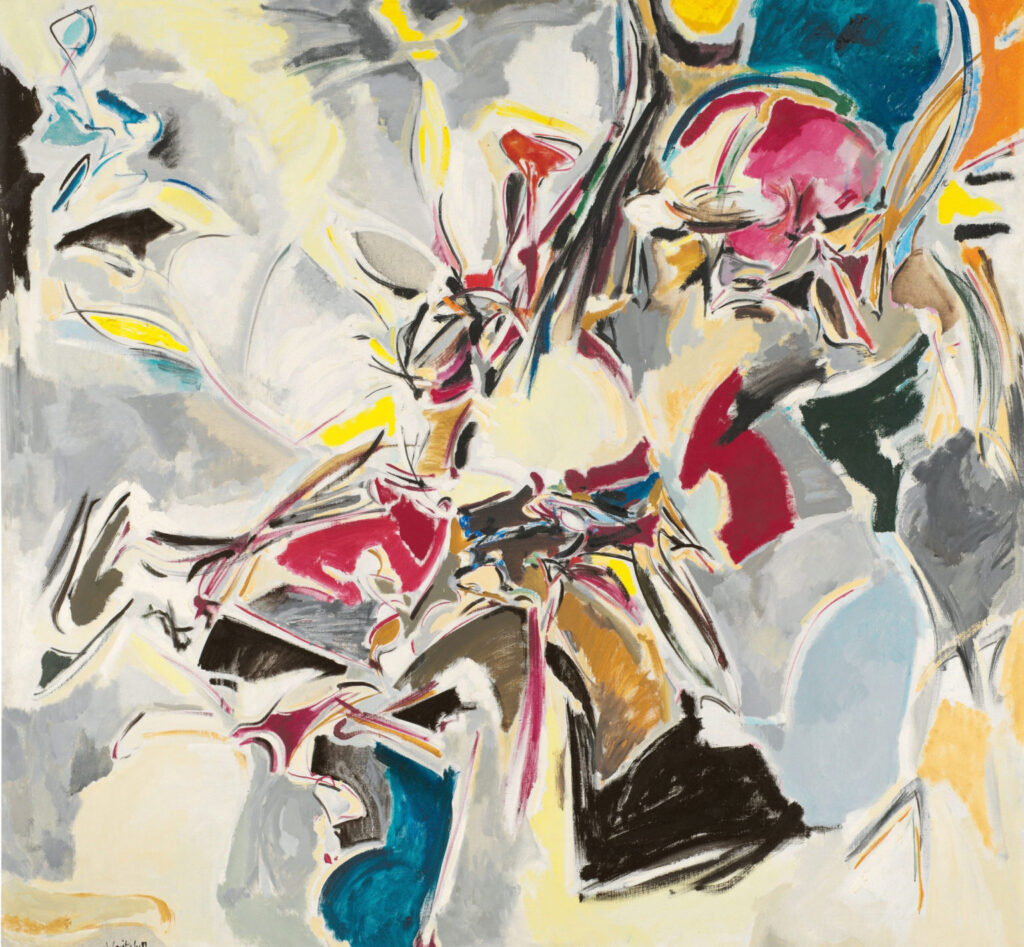
Joan Mitchell, Lyric, ca. 1951, Gift of William Rubin, Frances Lehman Loeb Art Center, Vassar College, Poughkeepsie, New York, NY, USA. © Estate of the artist. Photo by Chip Porter.
A trip to study in Europe solidified Mitchell’s signature abstract style, which was full of bright colors and bold shapes, non-representational yet often grounded in the natural world. Around the same time she married the publisher Barney Rosset (they divorced three years later).
I could certainly never mirror nature. I would more like to paint what it leaves with me.
Mitchell began to participate in small group shows in the early 1950s, the most important being the Ninth Street Show, a watershed moment for Abstract Expressionism. Mitchell’s work was particularly well received, leading to her first solo exhibition at the New Gallery in 1952.
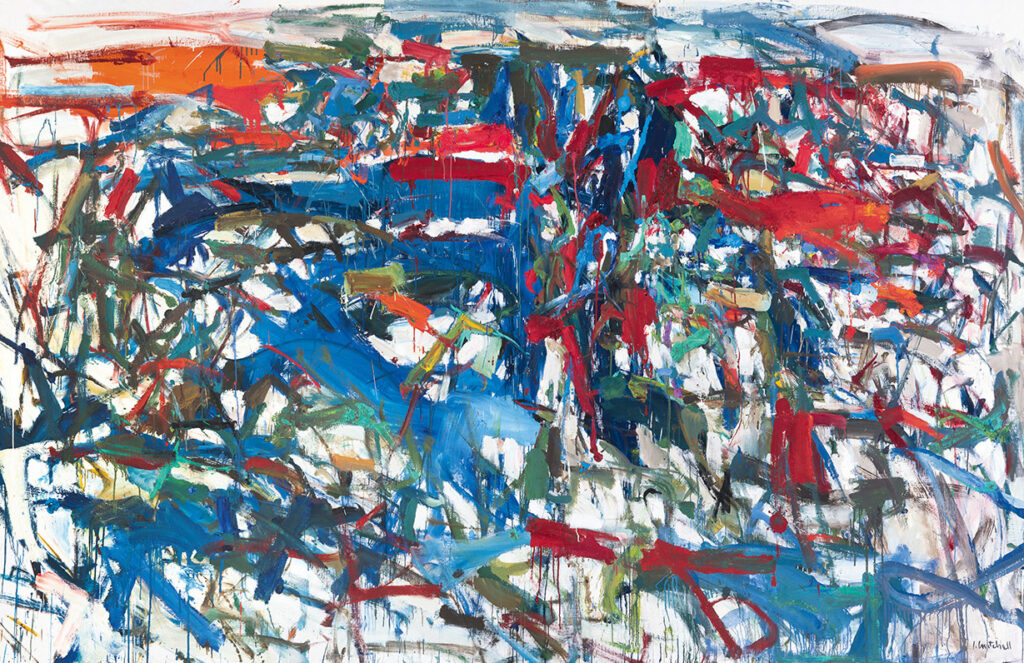
Joan Mitchell, To the Harbormaster, 1957, AKSArt LP. © Estate of the artist.
Despite her growing popularity in New York, in the late 1950s Mitchell bought an apartment in Paris and began to spend more time there. She soon met the Canadian painter Jean-Paul Riopelle who became her partner for the next 20-odd years. In France she began to create increasingly complex and large paintings, including diptychs and triptychs, forms she soon became known for.
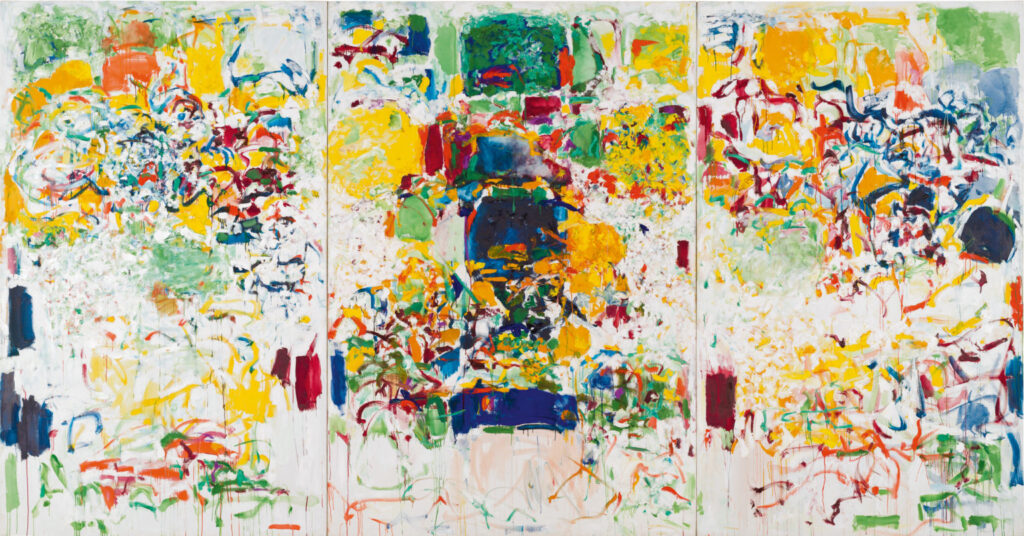
Joan Mitchell, Sans neige, 1969, Gift of the Hillman Foundation, Carnegie Museum of Art, Pittsburgh, PA, USA. © Estate of the artist.
By the 1960s, Mitchell was fully based out of Paris. Her works were more and more in demand, and she was asked to participate in prestigious shows like the Venice Biennale and the Salon des Réalités Nouvelles. Her painting began to change, from the wild, physical style of her early career that Mitchell herself described as “violent”, into a new, more controlled phase.
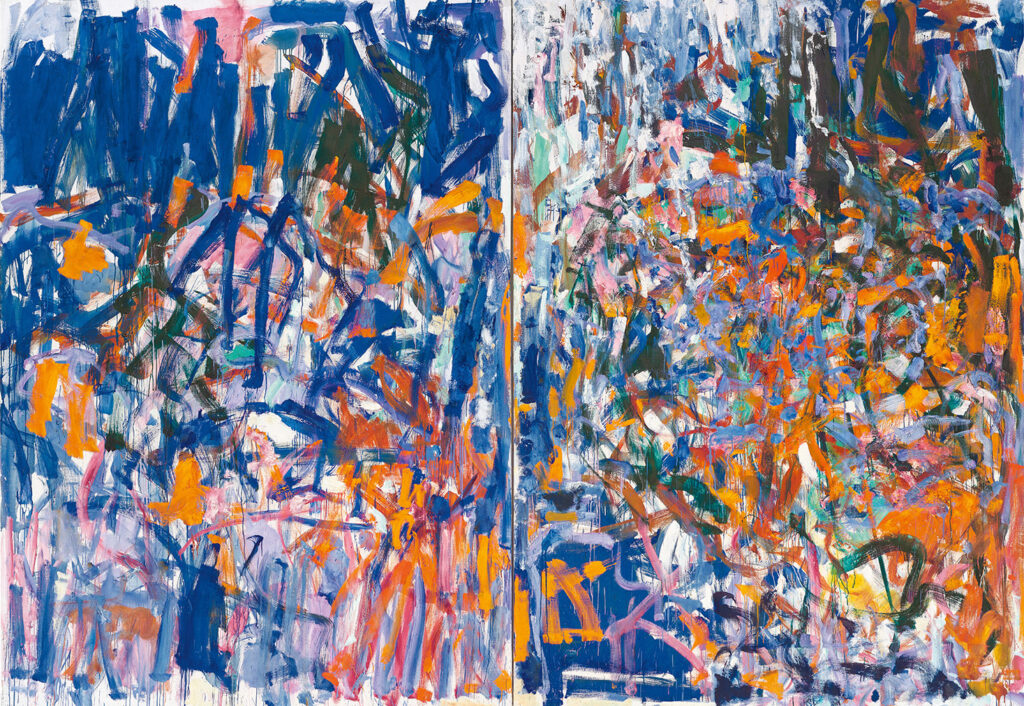
Joan Mitchell, Weeds, 1976, Gift of Joseph H. Hirshhorn, Hirshhorn Museum and Sculpture Garden, Smithsonian Institution, Washington, DC, USA. © Estate of the artist.Photo by Ian Lefebvre/Art Gallery of Ontario.
This aesthetic evolution coincided with Mitchel moving to a home in Vétheuil, near Giverny: the famed home of Claude Monet. It is easy to see the influence the French master had on Mitchell, especially his late, abstracted Waterlilies. Accompanied by her many dogs, Mitchell lived in Vétheuil until her death in 1992, drawing inspiration from the countryside that had influenced so many artists before her.
Music, poems, landscape, and dogs make me want to paint… And painting is what allows me to survive.
Mitchell gave her first major museum exhibition, My Five Years in the Country, in 1972 at the Everson Museum of Art in Syracuse. The show was received well by the critics, leading many to declare Mitchell as one of the best American painters of the 20th century.
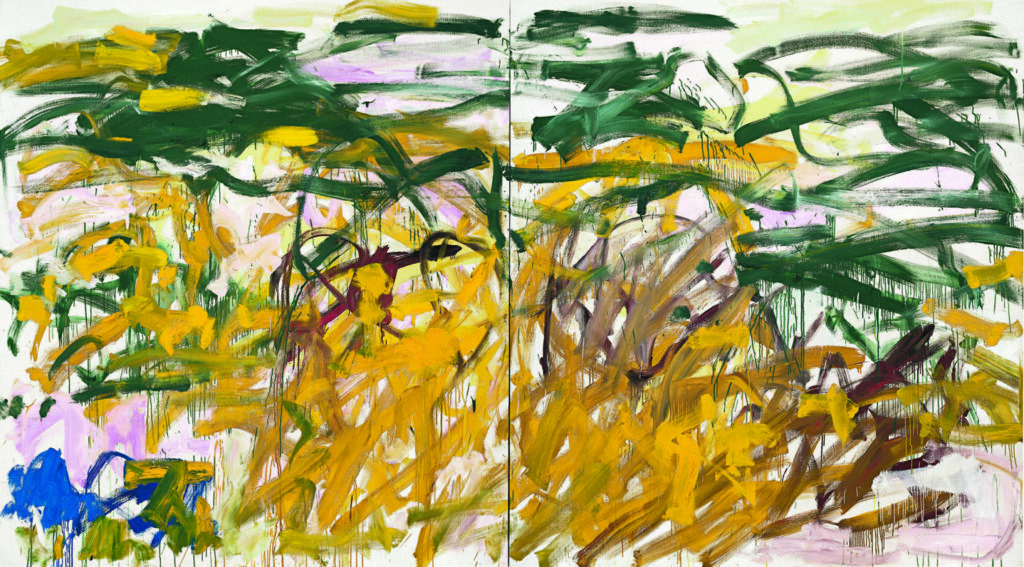
Joan Mitchell, No Birds, 1987–88, private collection. © Estate of the artist. Photo by Kris Graves.
A decade later, Mitchell became the first American woman to have a solo show at the Musee d’art moderne de la Ville de Paris. Soon after, however, her health began to fail. A diagnosis of oral cancer soon led to radiation, anxiety, and depression. Mitchell’s paintings from the mid-1980s reflect the artist’s somber and contemplative state of mind. Physically weakened, Mitchell experimented with watercolor painting while convalescing.
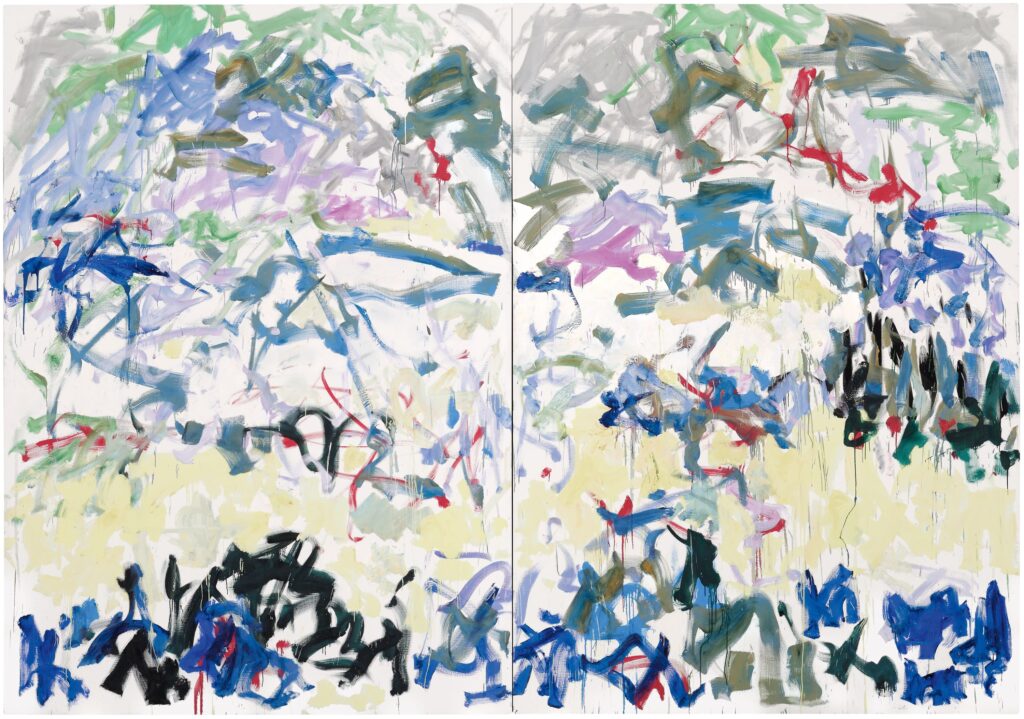
Joan Mitchell, River, ca. 1989. © Estate of the artist.
Mitchell painted until the very end, and held several more solo shows in the late 1980s. The artist died at the American Hospital of Paris on October 30, 1992. In her will she created the Joan Mitchell Foundation, an organization that still exists today, with the intention of aiding artists and carrying on Mitchell’s search for meaning and beauty through creation.
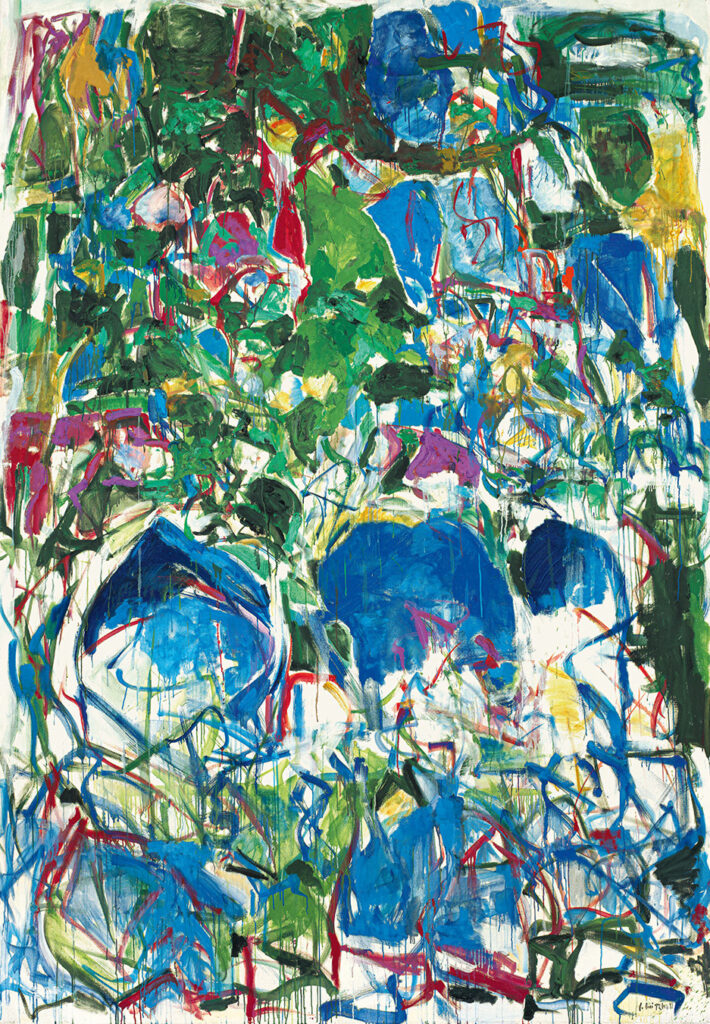
Joan Mitchell, My Landscape II, 1967, Gift of Mr. and Mrs. David K. Anderson, Martha Jackson Memorial Collection, Smithsonian American Art Museum, Washington, DC, USA. © Estate of the artist.
A comprehensive retrospective on the artist has just closed at the San Francisco Museum of Modern Art and is set to travel this summer and fall to the Baltimore Museum of Art and Fondation Louis Vuitton in Paris.
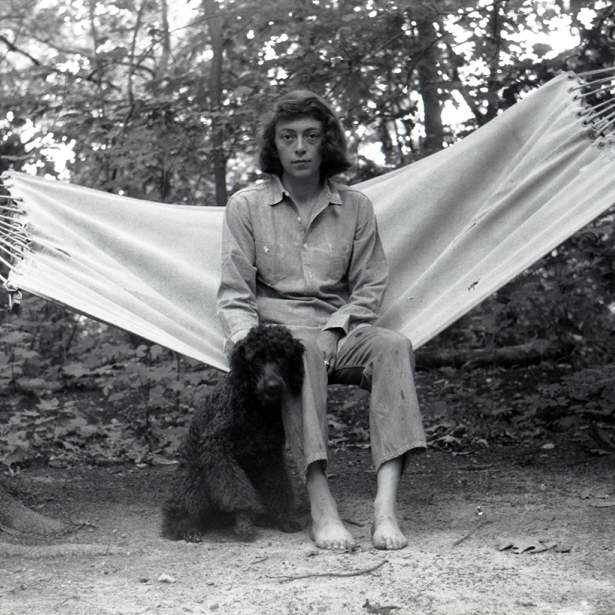
Joan Mitchell with her dog Georges du Soleil in Springs, NY, USA, ca. 1953. Joan Mitchell Foundation Archives. © Joan Mitchell Foundation. Photograph by Barney Rosset.
Mary Gabriel. Ninth Street Women: Lee Krasner, Elaine De Kooning, Grace Hartigan, Joan Mitchell, and Helen Frankenthaler: Five Painters and the Movement That Changed Modern Art. Back Bay Books, 2019.
DailyArt Magazine needs your support. Every contribution, however big or small, is very valuable for our future. Thanks to it, we will be able to sustain and grow the Magazine. Thank you for your help!